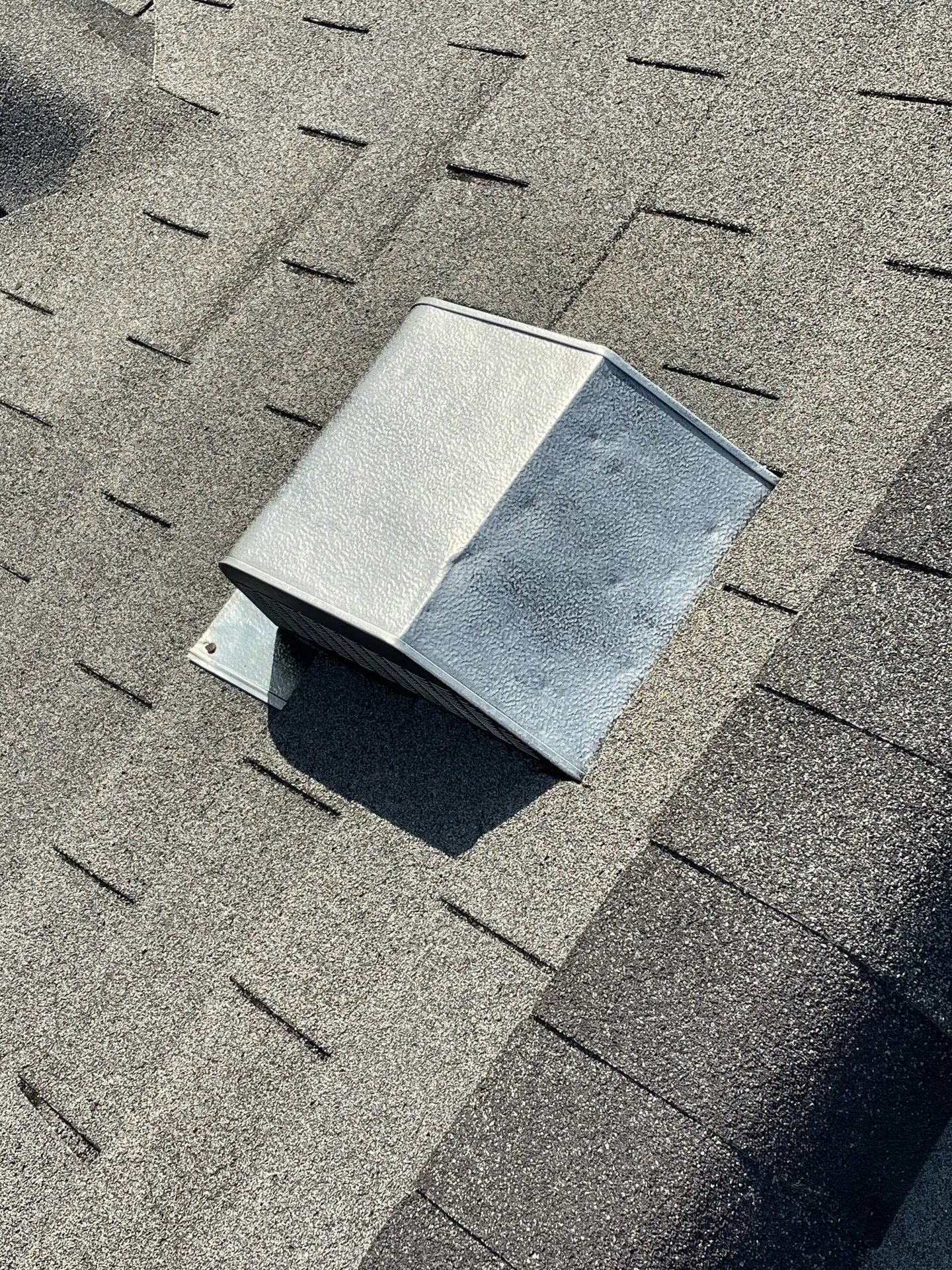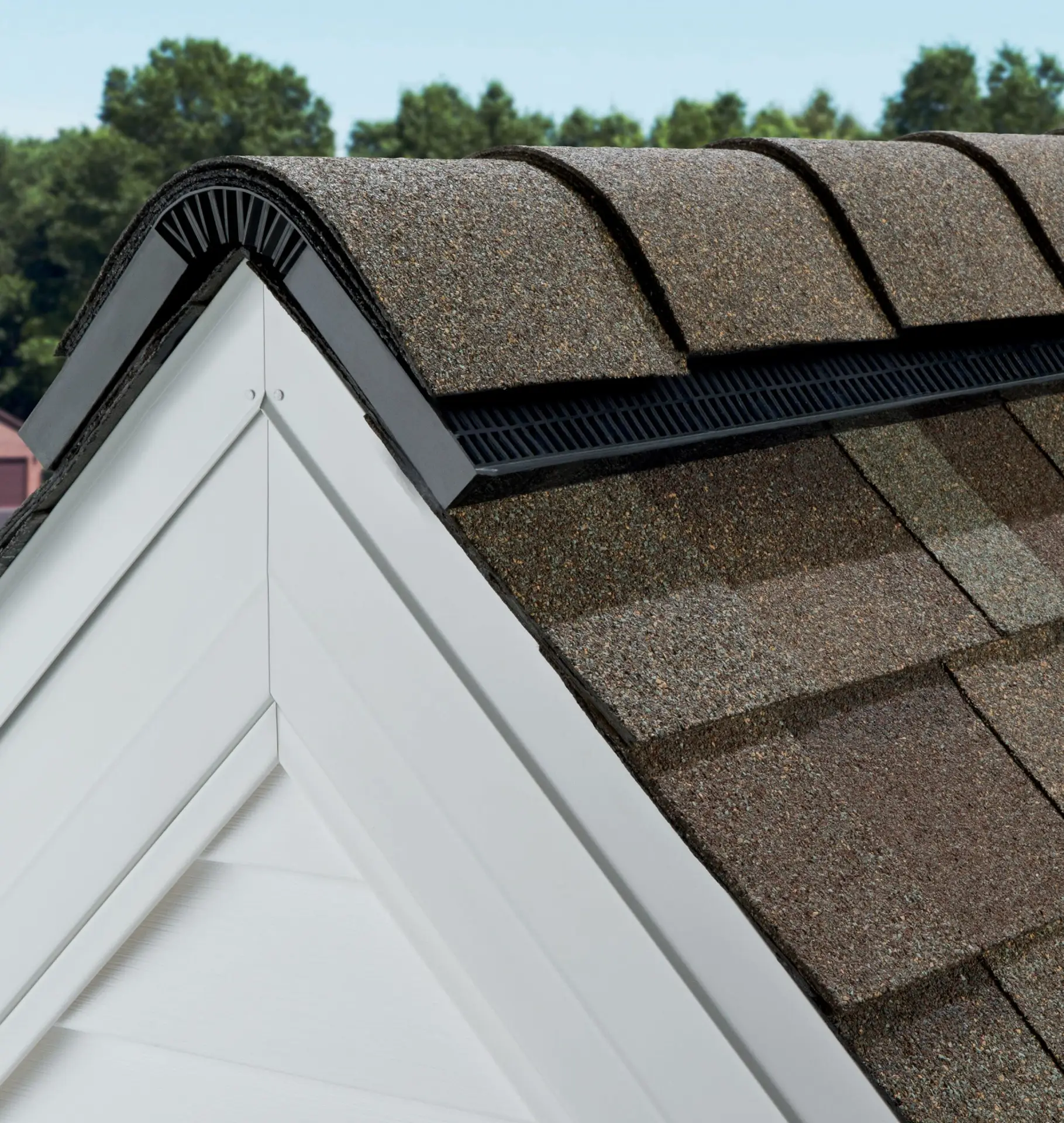
Today, we’re shining a light on an aspect of roofing that often goes unnoticed but plays a monumental role in your roof’s longevity and health: proper roof ventilation. In this post, we’ll delve into the significance of roof ventilation, why it’s crucial, and the different types of roof ventilation, each with its unique set of pros and cons.
Why Roof Ventilation Matters

Roof ventilation isn’t merely about regulating attic temperature; it’s about preserving the overall health of your entire roofing system. Here’s why it’s so pivotal:
Temperature Regulation: Proper ventilation ensures your attic maintains a balanced temperature. During scorching summers, it prevents the attic from becoming a heat trap, thus reducing the strain on your HVAC system. In winter, it prevents ice dams by keeping the attic cool.
Moisture Control: Ventilation plays a vital role in moisture management. It prevents condensation, which can lead to mold, mildew, and rot, all of which pose a threat to your roof’s structural integrity.
Energy Efficiency: By regulating attic temperature, roof ventilation enhances energy efficiency. A well-ventilated attic reduces the workload on your HVAC system, translating into lower energy bills.
Types of Roof Ventilation
Now, let’s explore the different types of roof ventilation and their respective pros and cons:
Ridge Vents:
Pros: Ridge vents, running along the peak of the roof, offer continuous ventilation. They are aesthetically pleasing and highly efficient.
Cons: Installation can be intricate, and they might not be suitable for all roof shapes.
Soffit Vents:
Pros: Soffit vents, installed in the eaves, facilitate cool air intake. They work exceptionally well in conjunction with ridge vents.
Cons: They might be less effective on their own and could require regular maintenance to prevent blockages.
Gable Vents:
Pros: Gable vents, located on the gable ends of the attic, can be effective when correctly sized and positioned.
Cons: They might not provide continuous ventilation, and their efficiency depends on wind direction.
Box Vents:
Pros: Box vents, also known as roof louvers or static vents, are cost-effective and easy to install. They can provide adequate ventilation when strategically placed.
Cons: They might not be as efficient as continuous ridge and soffit ventilation systems.
Power Vents:
Pros: Power vents, equipped with electric fans, actively remove hot air, making them effective in extremely hot climates.
Cons: They consume electricity and might require regular maintenance.
In conclusion, proper roof ventilation isn’t a luxury; it’s a necessity for a healthy, long-lasting roof. Each ventilation system type has its advantages and disadvantages, making it vital to select the one aligning with your roofing needs and local climate conditions.
At No Limit Roofing and Exteriors, we comprehend the critical role roof ventilation plays in preserving your roofing system’s integrity. Our team of experts is here to guide you in making the right choice for your home. Reach out today for a free consultation, and let’s ensure your roof enjoys the benefits of proper ventilation for years to come. Your roof, with No Limit, stands strong and resilient!

